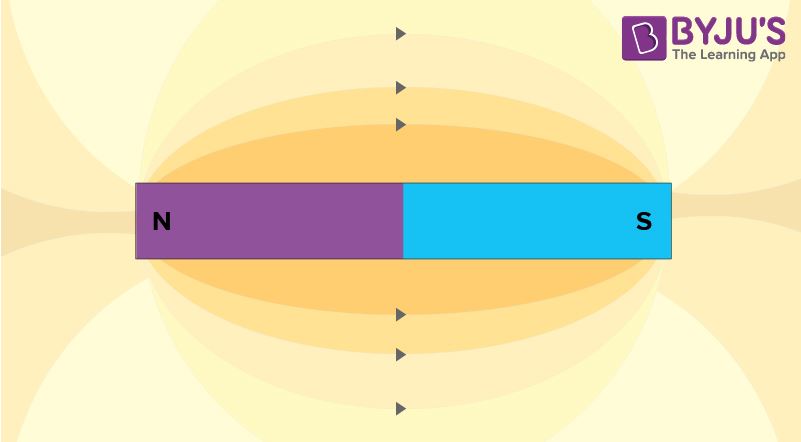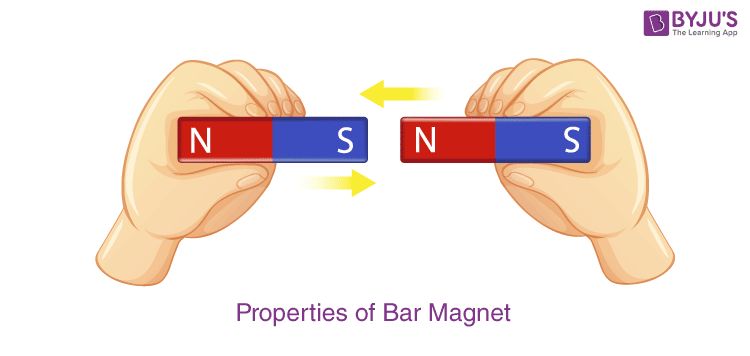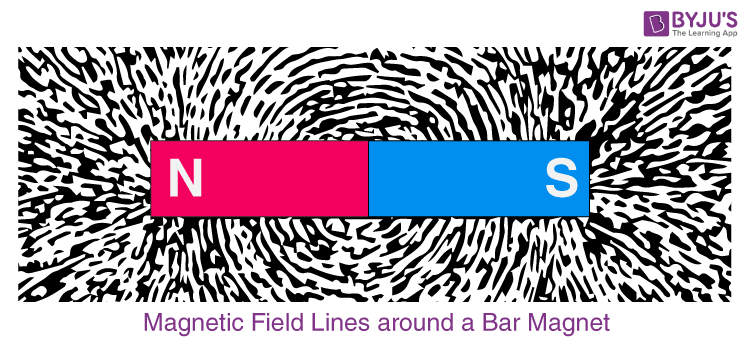During our childhood, we all have been marvelled by the properties of a bar magnet. It attracts tiny pieces of iron scraps and nails and repels another magnet when oriented in a particular manner. In this short piece of article, we will learn about bar magnet in specific, their properties and other related topics in detail.
Classification of MagnetsBar Magnet DefinitionBar Magnet TypesBar Magnet PropertiesBar Magnet UsesPole Strength Definition
Classification of Magnets

Magnets are classified into two groups as natural and artificial magnets based on how they achieved their magnetism and for how long they retain their magnetic abilities and on their magnetic field. Natural magnets occur in nature and are much weaker than artificial magnets.
- Natural magnets – Natural magnets occur in nature and have a weak magnetic field. Lodestones are a common example of natural magnets.
- Artificial magnets – Artificial magnets can be produced by man-made means and have a stronger magnetic field. They can also be shaped as required. When an artificial magnet is shaped in the form of a bar, it is called a bar magnet.
What is Bar Magnet?
A bar magnet is a rectangular piece of an object, made up of iron, steel or any other ferromagnetic substance or ferromagnetic composite, that shows permanent magnetic properties. It has two poles, a north and a south pole such that when suspended freely, the magnet aligns itself so that the northern pole points towards the magnetic north pole of the earth.
Types of Bar Magnet
There are two types of bar magnet:
- Cylindrical bar magnet: A cylindrical rod is also known as rod magnets that have a thickness equal to larger than the diameter enabling high magnetism property. These bar magnets find application in educational, experimental, and research uses.
- Rectangular bar magnet: Rectangular bar magnets find applications in manufacturing and engineering industries as they have magnetic strength and field greater than the other magnets.

Properties of Bar Magnet
A bar magnet has properties similar to any permanent magnet.
- It has a north pole and a south pole at two ends. Even if you break a bar magnet from the middle, both the pieces will still have a north pole and a south pole, no matter how many pieces you break it in.

- The magnetic force of it is the strongest at the pole.
- If this magnet is suspended freely in the air with a thread, it will not come to rest until the poles are aligned in a north-south position. A Mariner’s Compass uses this property to determine direction.
- If two bar magnets are placed close to each other, their unlike poles will attract and like poles will repel each other.
- A bar magnet will attract all ferromagnetic materials such as iron, nickel and cobalt.
Magnetic Field Lines around a Bar Magnet
Let us understand the concept of magnetic field lines using the following activity. Let us sprinkle iron filings on a sheet of paper and a bar magnet in between. When we tap the paper, we notice that the fillings get aligned in the manner shown in the figure below.

The magnetic field lines can be defined as imaginary lines that can be drawn along the magnetic field that is acting around any magnetic substance. The magnetic field lines possess certain properties,
- The magnetic field lines of a magnet form continuous closed loops.
- The tangent to the field line at any point represents the direction of the net magnetic field B at that point.
- The larger the number of field lines crossing per unit area, the stronger is the magnitude of the magnetic field B.
- The magnetic field lines do not intersect.
How are Electromagnets different from Bar Magnets?
Though electromagnets and bar magnets show similar magnetic fields but the following are the differences between them:
- Most bar magnets are blocks of ferromagnetic materials while electromagnets are coils of wire which sometimes are surrounded by a ferromagnetic core. Electromagnets behave like bar magnets when an electric current is passed through them.
- Bar magnets generate their own magnetic field while electromagnets depend on the external sources of electric current for the generation of magnetic field.
- Bar magnets have a constant magnetic pull as they are permanent magnets while electromagnets do not have a constant magnetic pull as they are controlled by external source of electric current.
- The magnetic force of the bar magnet is constant and is dependent on the material it is made from while the magnetic force of an electromagnet can be varied by varying the amount of electricity flowing through the coil.
Related Articles:
Uses of Bar Magnet
- Bar magnets are used as stirrers in laboratory for magnetic experiments.
- They also find applications in medical procedures.
- Electronic devices such as telephones, radios, and television sets use magnets.
- Many industries use bar magnets for the collection of loose metals and also for retaining magnetism of other magnets.
What is Pole Strength?
Pole strength is defined as the strength of a magnetic pole to attract magnetic materials towards itself. Pole strength is a scalar quantity.
SI Unit of Pole Strength
| SI unit | N.Tesla-1 |
| Dimensions | [LA] |
Formula of Pole Strength
The formula for calculating the pole strength is:
\(\begin{array}{l}P=\frac{W}{I}\end{array} \) |
Where,
- P is the Strength of the magnetic pole
- W is the work done while moving the magnet around the wire
- I is the electric current in the wire
Alnico and Neodymium Bar Magnet
It will be incomplete to talk about bar magnets and not mention Alnico bar magnet and neodymium bar magnet. The primary components of Alnico magnets are aluminium, nickel, cobalt, and iron. These magnets produce a strong magnetic field and retain their magnetic property even under extreme heat. Neodymium bar magnets are made with a mixture of neodymium, boron, and iron. These are both extremely powerful magnets but very brittle.




Excellent explanation
awesome